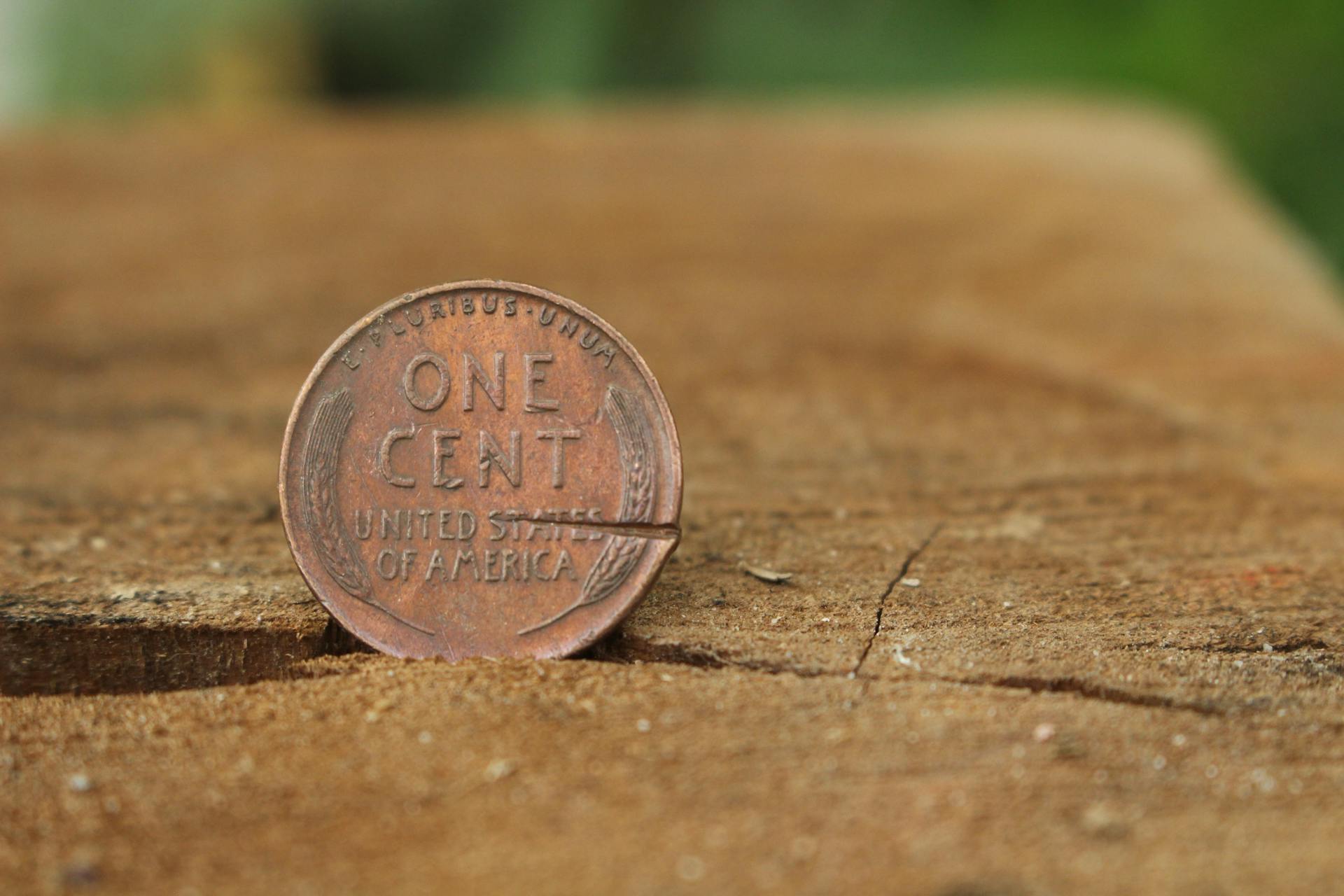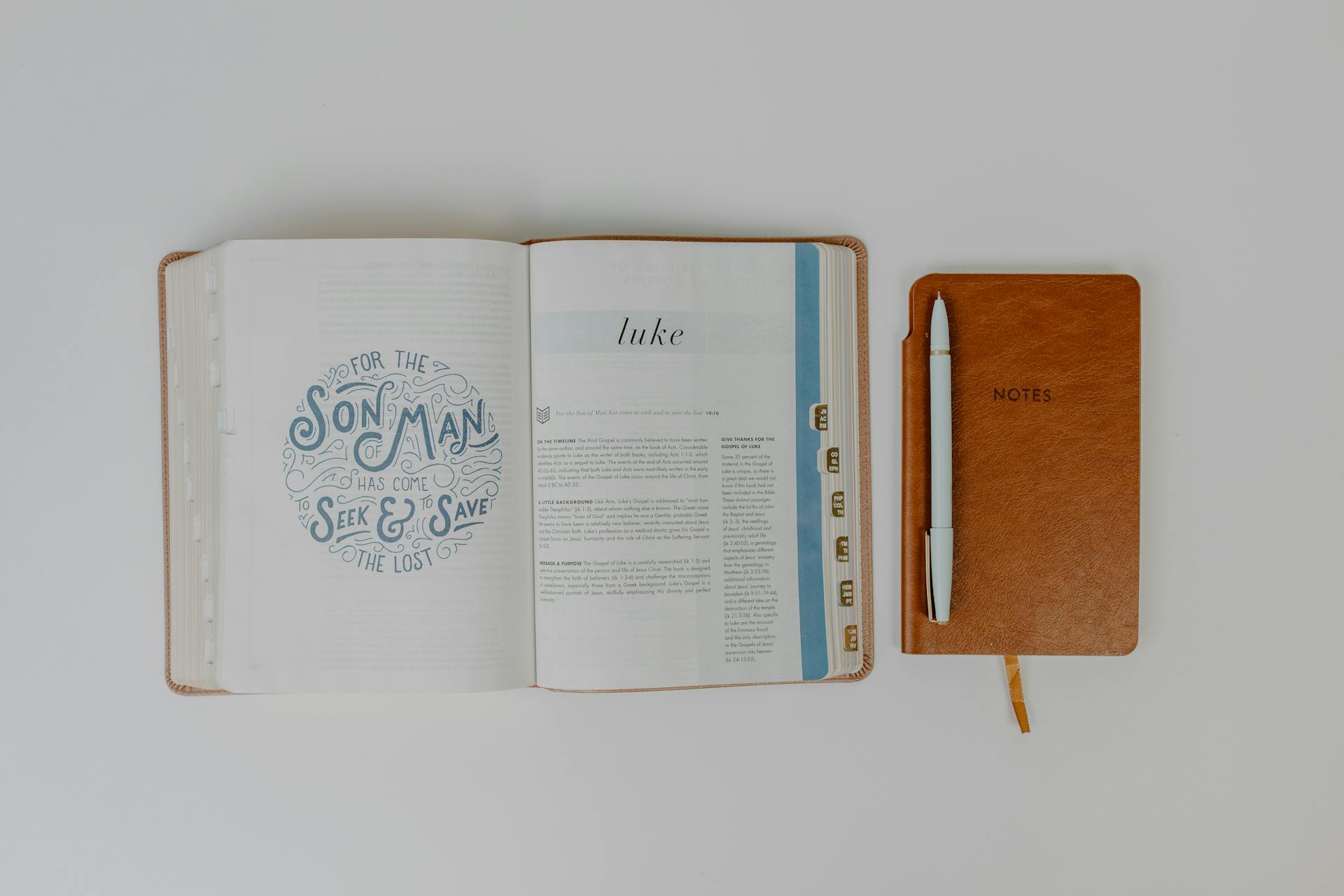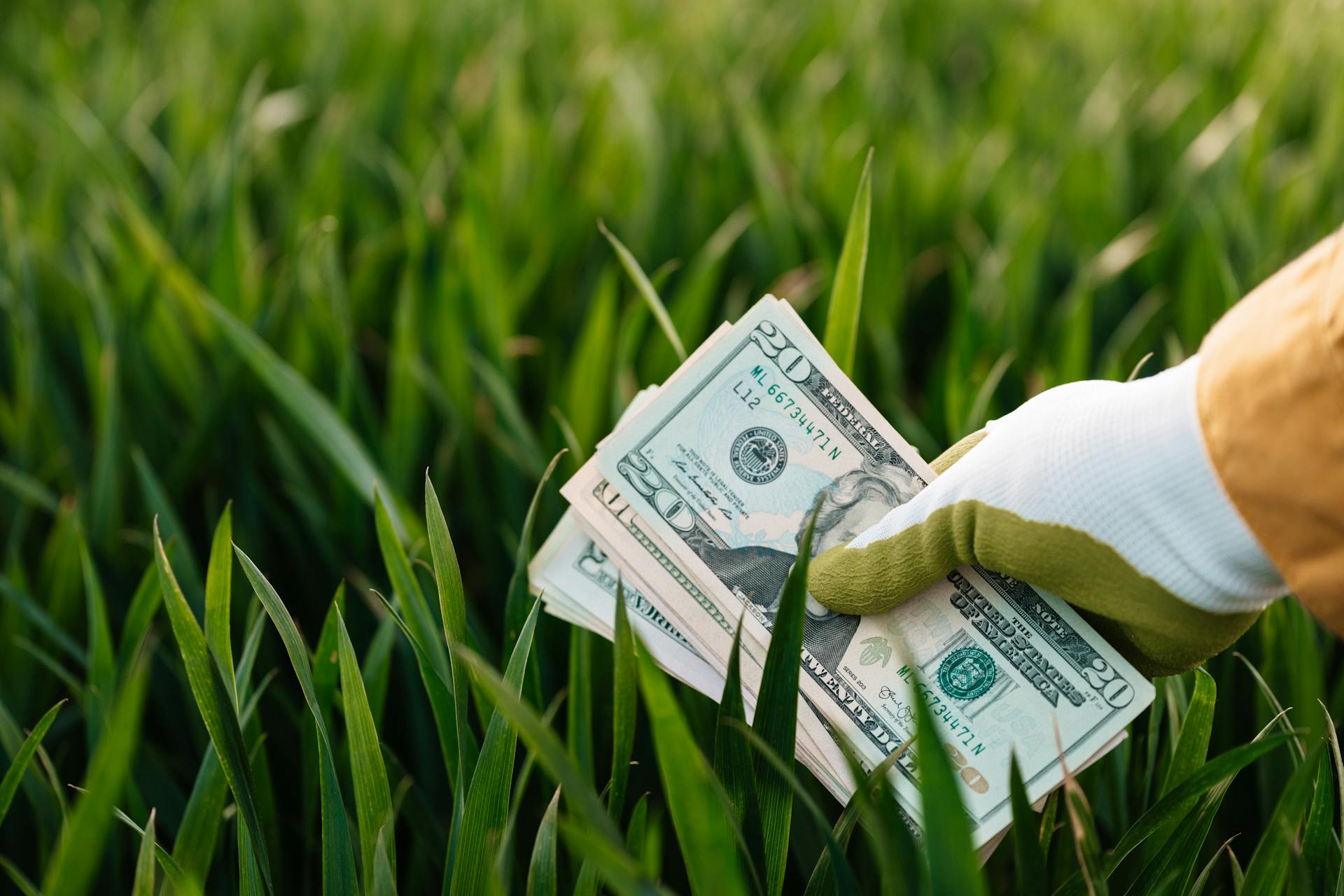
Confederate money was a currency issued by the Confederate States of America during the American Civil War. It was created to finance the war effort and pay for goods and services.
The first Confederate currency was issued in 1861, just before the war began, and it was backed by the government's promise to pay the face value in gold or silver. However, the Confederate government struggled to back its currency with gold or silver, leading to inflation and a decline in the currency's value.
One notable fact is that Confederate money was printed in various denominations, including $1, $2, $5, $10, $20, $50, $100, $500, $1,000, and $5,000 bills. These bills featured unique designs, such as portraits of prominent Confederate leaders and symbols of the Confederacy.
In practical terms, Confederate money was used to pay soldiers' wages, purchase goods and services, and even to pay taxes.
Related reading: Gold for Bitcoins
Design and Production
The Confederacy had limited access to skilled engravers and printers, as well as secure printing facilities, which led to the use of unrelated designs in early banknote issues.
Typical Confederate themes included naval ships and historical figures, such as George Washington, who was featured on one of the notes.
Many variations in plates, printing, and papers appear in most of the issues due to the limits on commerce resulting from the Union blockade and the inadequate Confederate railroads.
The Confederacy had to rely on the offset or lithographic process to copy scenes from notes they had access to, as most engravers and bank plates were in the Northern states.
The following printers and engravers were involved in the production of Confederate dollar banknotes:
Designs
The Confederacy had limited access to skilled engravers and printers, which led to some creative design choices. They often used abstract depictions of mythological gods and goddesses, such as the Goddess of Liberty.
Typical Confederate themes included naval ships and historical figures, including George Washington. Many banknotes featured famous people, like Andrew Jackson and John C. Calhoun.

The Confederacy had to get resourceful with their design process, often copying scenes from Northern states using offset or lithographic processes. This resulted in many variations in plates, printing, and papers.
Some banknotes featured notable figures like Alexander H. Stephens and Jefferson Davis. There was also a bill featuring George Washington.
Coinage
The process of creating a coin is a complex one, involving several stages from design to production.
The first step in producing a coin is to design it, which typically involves creating a model or prototype of the coin. This is done to ensure that the coin meets the required specifications and is visually appealing.
The design process can take anywhere from a few weeks to several months, depending on the complexity of the design and the number of revisions required.
In 2020, the Royal Canadian Mint produced a coin with a unique security feature that made it difficult to counterfeit. This feature was a micro-engraved image that could only be seen under magnification.
Broaden your view: New Us Currency Design
The production of a coin involves several stages, including striking, where the design is pressed into a metal blank, and finishing, where the coin is polished and treated to give it a high-quality finish.
In 2019, the United States Mint produced over 1 billion coins, with the most popular being the penny, which accounted for over 7 billion coins produced.
Banknote Printers and Engravers
The process of creating Confederate States dollar banknotes involved a network of printers and engravers across the South. National Bank Note Company, based in New York, printed series 1-4.
These companies were often branches of larger operations, like the American Bank Note Company. The Southern Bank Note Company, a Southern branch of the American Bank Note Company, printed series 5, 6, 15, 19, 22, 31.
In Richmond, Virginia, several firms played a crucial role in printing CSA banknotes. Hoyer & Ludwig, a partnership between Louis Hoyer and Charles Ludwig, operated from 1861-64 and printed series 7-11, 13-14, 17-18, 27-28, 35-36, 46.
Jules Manouvrier, a lithographer, was contracted to print $10 CSA notes in New Orleans, but his contract was cancelled after some of his prints were stolen and entered circulation with forged signatures.
Worth a look: Where Is Us Currency Printed
Interest-Bearing Money
Interest-bearing money is a crucial component in the design and production of financial systems. It can be generated from loans, deposits, or investments.
In a typical financial system, interest-bearing money is created when a bank lends money to a customer, charging them interest on the loan. This process is known as fractional reserve banking.
The interest rate on loans can significantly impact the amount of interest-bearing money in circulation. A higher interest rate can lead to more money being borrowed and, subsequently, more interest-bearing money being generated.
A 5% interest rate on a $100 loan would result in $5 in interest being paid over the course of a year. This may seem like a small amount, but it can add up quickly.
The design of interest-bearing money can also have a significant impact on the economy. For example, a system that prioritizes interest-bearing money over other forms of currency can lead to economic instability.
Explore further: 5 Kronur
In some financial systems, interest-bearing money is used to stimulate economic growth by providing low-interest loans to businesses and individuals. This can help to increase economic activity and create jobs.
The production of interest-bearing money is often tied to the creation of debt. As more debt is created, more interest-bearing money is generated. This can create a cycle of debt that can be difficult to escape.
Frequently Asked Questions
Is Confederate money worth anything?
The value of Confederate money varies greatly depending on its rarity and condition, with rare notes potentially worth thousands of dollars. Learn more about the factors that determine the value of Confederate currency.
What is Confederate money called?
Confederate money is commonly referred to as "Greyback" or "Blueback" notes. This nickname distinguishes it from Northern "Greenback" notes.
Is there any Confederate money left?
Yes, many Confederate banknotes still exist, but they are no longer considered legal currency. They are now valuable as antique collector's items
Sources
- https://en.wikipedia.org/wiki/Confederate_States_dollar
- https://source.colostate.edu/what-happened-to-confederate-money-after-the-civil-war/
- https://www.sarasotanumismatics.com/inventory/paper/confederate-currency.html
- https://eh.net/encyclopedia/money-and-finance-in-the-confederate-states-of-america/
- https://www.bellevuerarecoins.com/products/currency/confederate-paper-currency/
Featured Images: pexels.com

